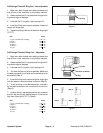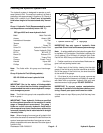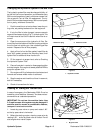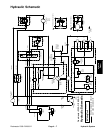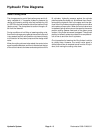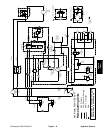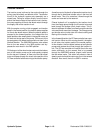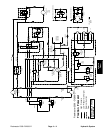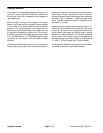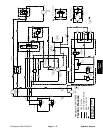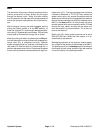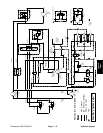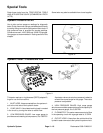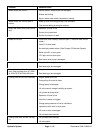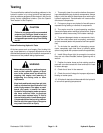
Reelmaster 2300–D/2600–DHydraulic System Page 4 – 12
Traction Reverse
The traction circuit operates essentially the same in re-
verse as it does in the forward direction. However, the
flow through the circuit is reversed and by–passes the
rear wheel motor.
With the engine running, clutch engaged, and traction
pedal in the neutral position, the traction pump supplies
no flow to the wheel motors. When the traction pedal is
pressed to the reverse position, the linkage from the
pedal positions the swash plate in the traction motor so
oil flows out the bottom port of the pump. Oil flow out of
the bottom port goes to the wheel motors and turns them
in the reverse direction. The 2WD/3WD selector valve
by–passes the rear wheel in both the 2WD and 3WD
positions.
Oil flowing out of the wheel motors returns to the top port
of the traction pump and is continuously pumped out the
bottom port. However, oil flow to the rear wheel motor is
blocked by the check valve portion of the PC flow con-
troller and forced through the restriction before going to
the motor. Flow is limited to 2.1 GPM to the rear wheel
motor. This flow is sufficient to prevent cavitation on the
rear motor in reverse.
Because of the by–passing of the rear wheel motor in re-
verse and the resistance to flow of the two front wheel
motors, all the traction flow is by–passed directly back
to the traction pump when the traction pedal is initially
pushed in the reverse direction. This direct by–passing
of the traction circuit causes a delay in the response of
the traction pedal in reverse until traction flow exceeds
2.1 GPM (7.9 LPM) through the PC flow controller.
The charge and shuttle valve circuits function the same
in reverse as they did in the forward direction.



